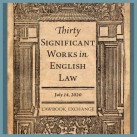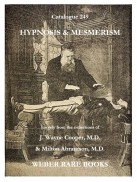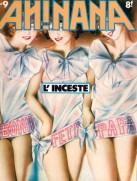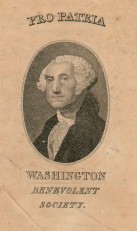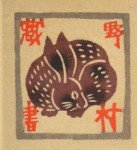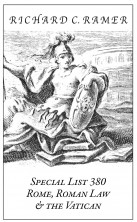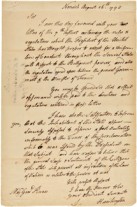Bookseller Catalogs
249: HYPNOSIS & MESMERISM – Spiritualism – Medical History & Oddities TOPICS: Biology – Botany – Drugs – Eugenics – Evolution – Family Medicine – Genetics – Heredity – Hydrotherapy – HYPNOTISM – Literature – Medical Biography – Medical History – Mental Retardation – Military Medicine – Netherlands – Isaac NEWTON – Occult – Paleontology – Paleontology – Paranormal – Pregnancy – Psychic Phenomena – Psychokinesis – Psychology – Psychotherapy – Science Biography – Spiritualism – Tobacco – Tuberculosis
How to request a print version: Contact: Jeff Weber 323 333-4140
List 108 A selection of maps issued on the 450th anniversary of the publication of Abraham Ortelius' "Theatrum Orbis Terrarum," generally considered the first modern atlas. .Featured are several maps by Ortelius. Also included are unusual 19th and early 20th century facsimiles of rare cartographic items, a 19th century history of the Carey & Lea publishing firm and two early portraits of George Washington.-- one a pro-Federalist campaign item and the other a gift for subscribers to the Philadelphia Ledger in 1856.
In the list are a diverse selection of maps including an early 19th century depiction of the "southern states," a highly decorative map of France with a border of city plans and forts, several maps of British victories in the War of Spanish Succession and a Punch cartoon from the era of colonial imperialism with Cecil Rhodes astride a map of Africa.
How to request a print version: email us at maps@ritzlin.com for a printed copy of list 108
KATAZOME- Stencil-Printed Books Katazome, the use of a stencil as part of a process of paper and cloth dyeing, traces its roots, as do so many arts and crafts in East Asia, to the "Middle Kingdom" - China.
Here, we are concerned with its appearance and employment in Japan. Early on, during the Nara period (late 8th century), the stencils themselves appear to have been carved from wood. Examples remain at Hōryūji Temple, etc. But, eventually, paper became the preferred tool for stencilling.
The use of stencils and takuhon rubbings may well be older than the employment of carved wood block hangi to create prints, books and reproductions. Indeed, much later, the earliest color-printed works in both China and Japan in the 17th and 18th century often were colored mostly using stencilling techniques.
So, it is delightful to find wonderful examples of brightly colored, mingei folk art-inspired, katazome stencil-printed books still being created in the recent past in Japan. Often inspired by folk stencilling like the remarkable bingata patterning of Okinawa, they created a new aesthetic world in the latter half of the 20th century.
Such artists and scholars of dyeing techniques as Gotō, Serizawa, Kamakura, Okamura, Kanzaki and others employed katazome to produce wonderful prints and artist's books, which were issued by such publishers as Gohachi Shobō in Tōkyō. Artists famous in other media, like Sekino Junichirō, also experimented with katazome and produced masterpieces of the genre.
We are presenting here a small list of works, mostly done in that post-War period, which include some of the most significant productions in the medium.
You might also note that we have virtually the entire "toolset" of hand-cut katagami paper, many thousands of them, from the remains of a Kyōto dyeing house. It makes a fascinating and illustrative record of technique and product from the world of traditional Japanese design and textile dyeing.
Please enjoy the descriptions below, and don't forget to click on the thumbnail images to see selections from the works. There are treasures within!
Special List 380: Rome, Roman law & the Vatican 38 items on Rome, Roman law, and the Vatican, with full-color illustrations
Americana E-list: Summer Letters 26 items, fully illustrated. Orders and inquiries should be directed to amorder@reeseco.com.

